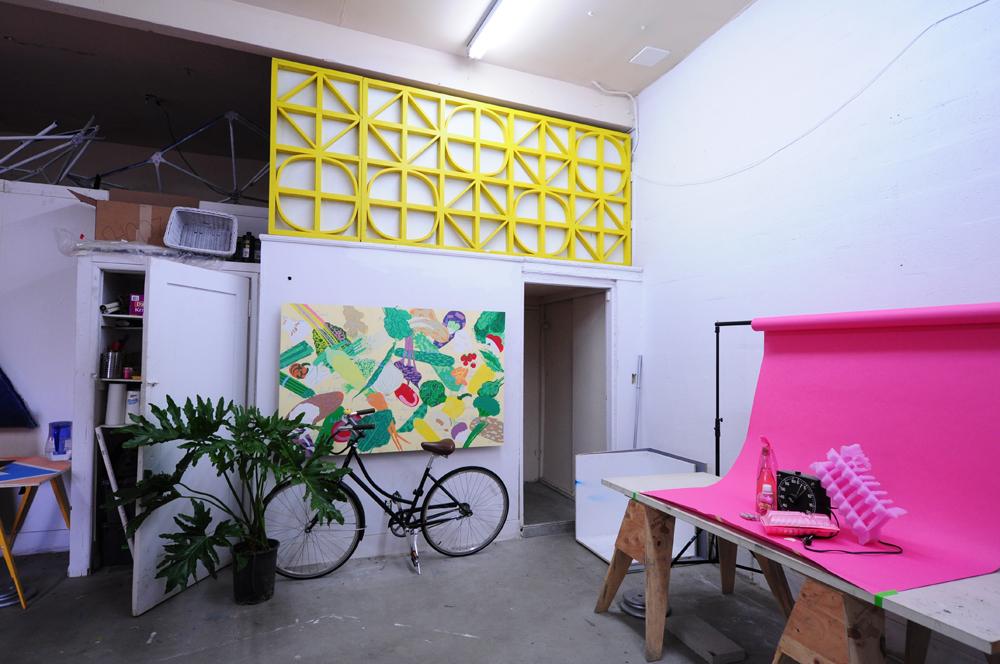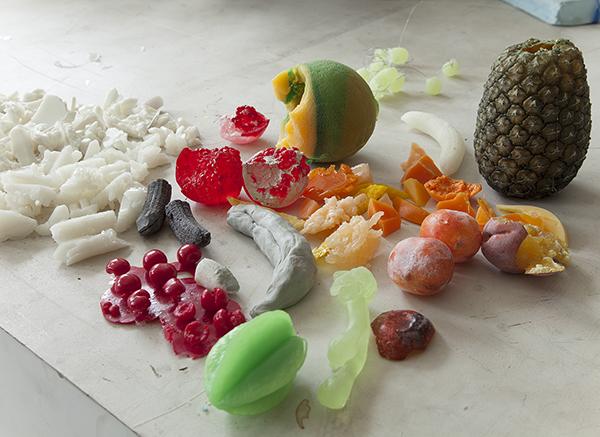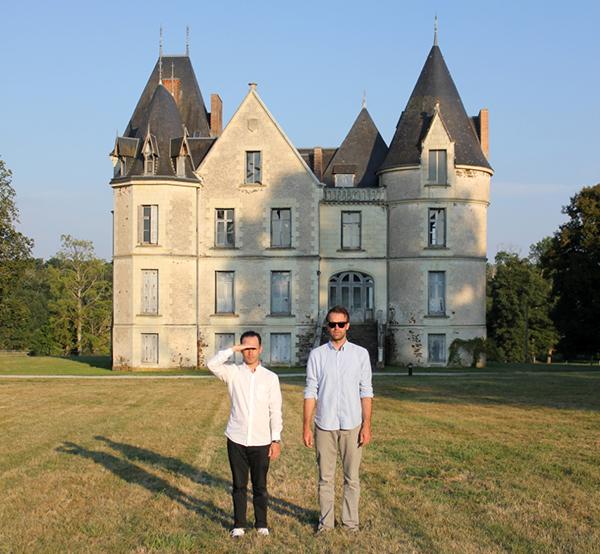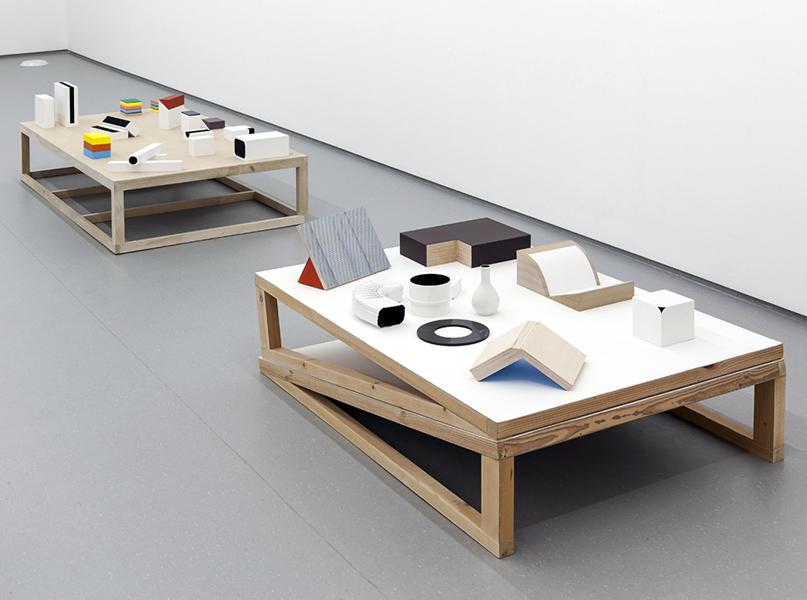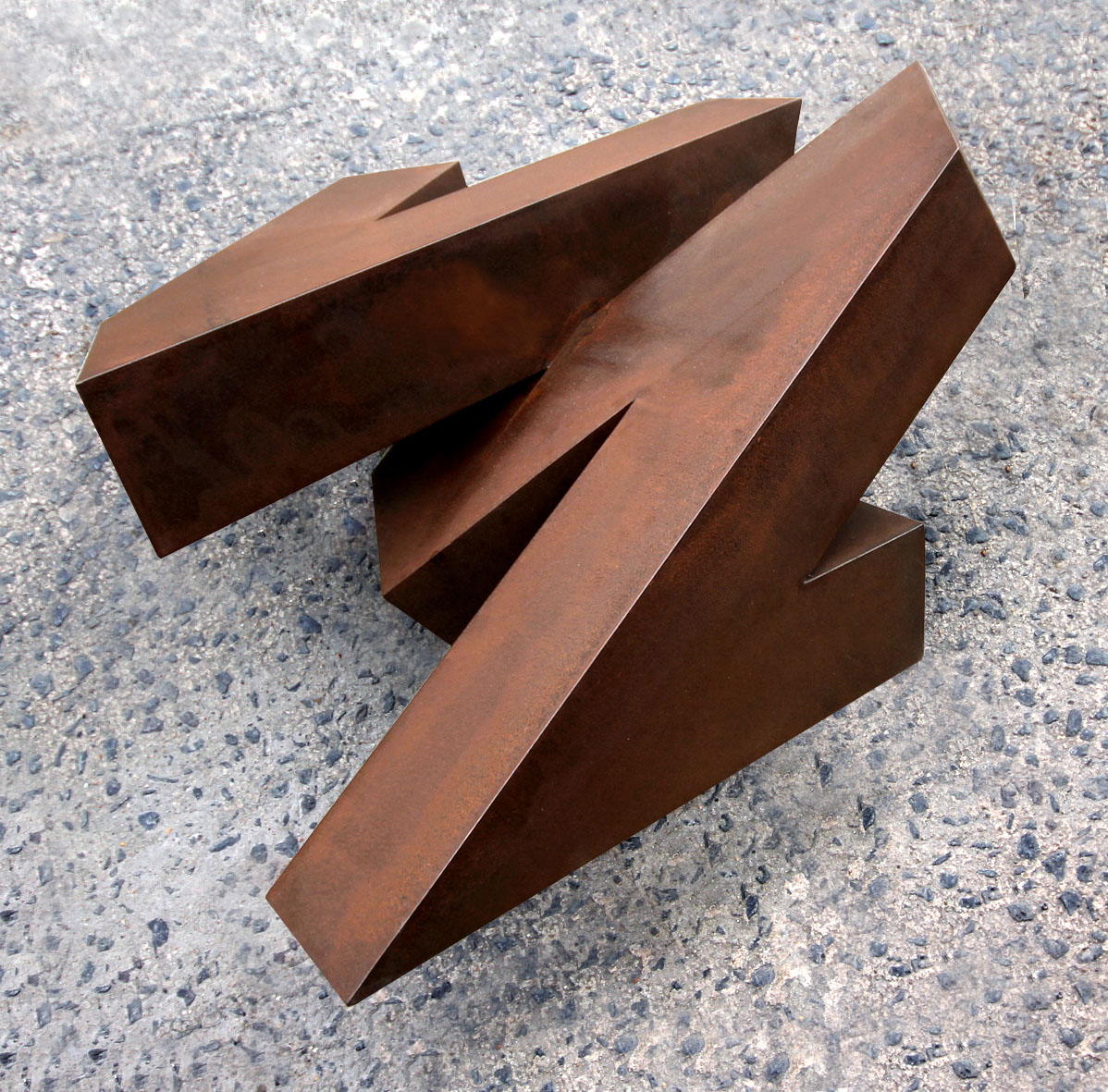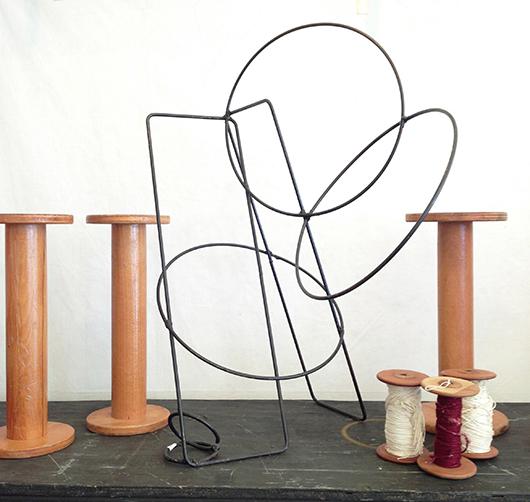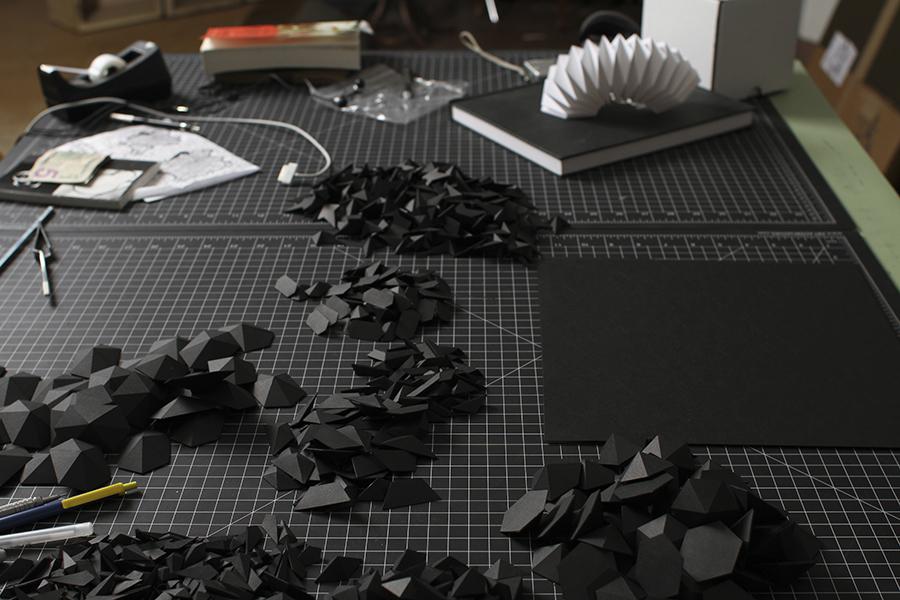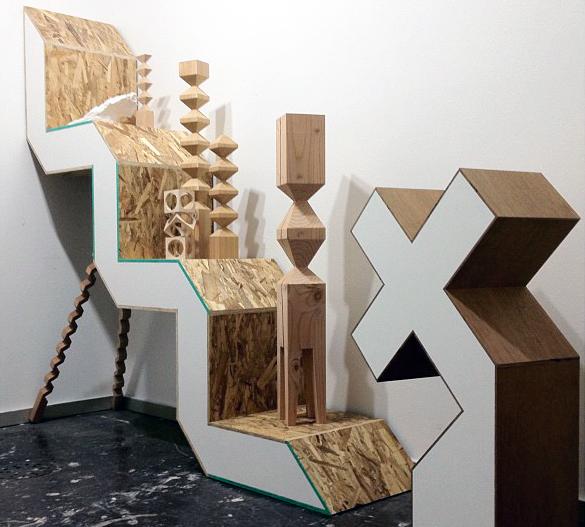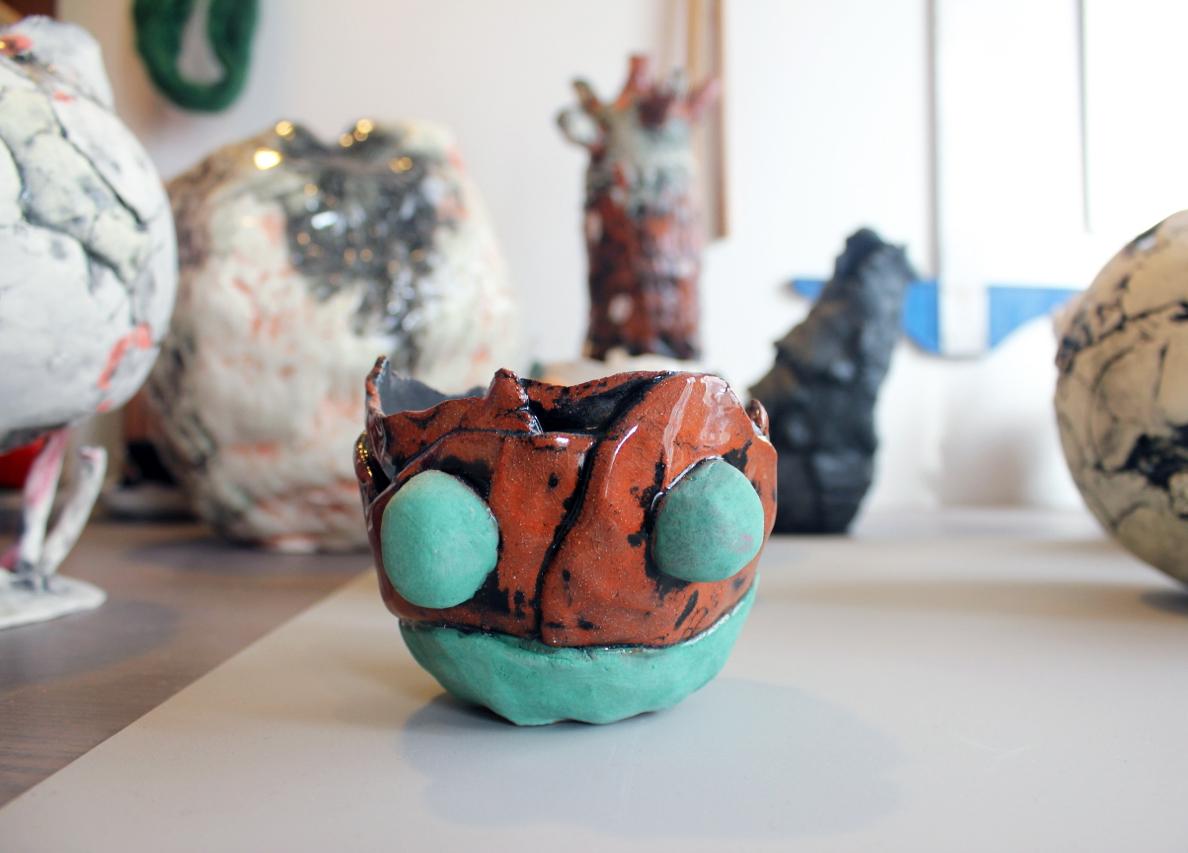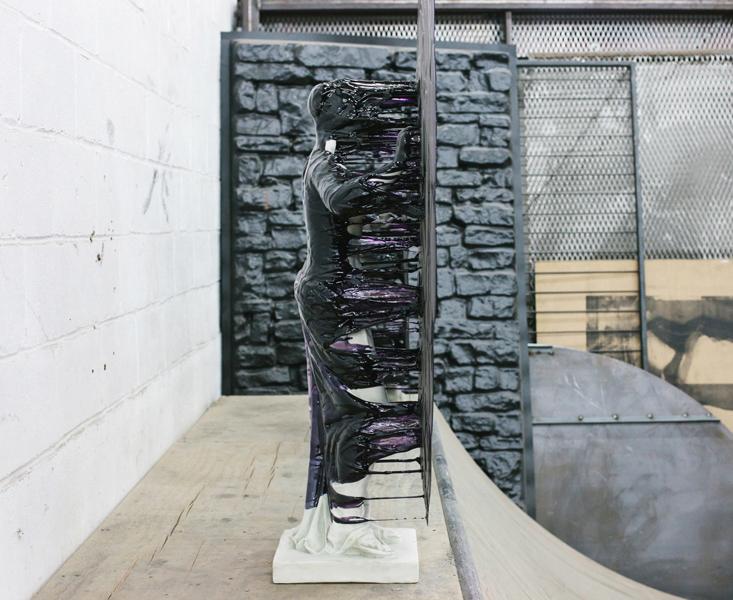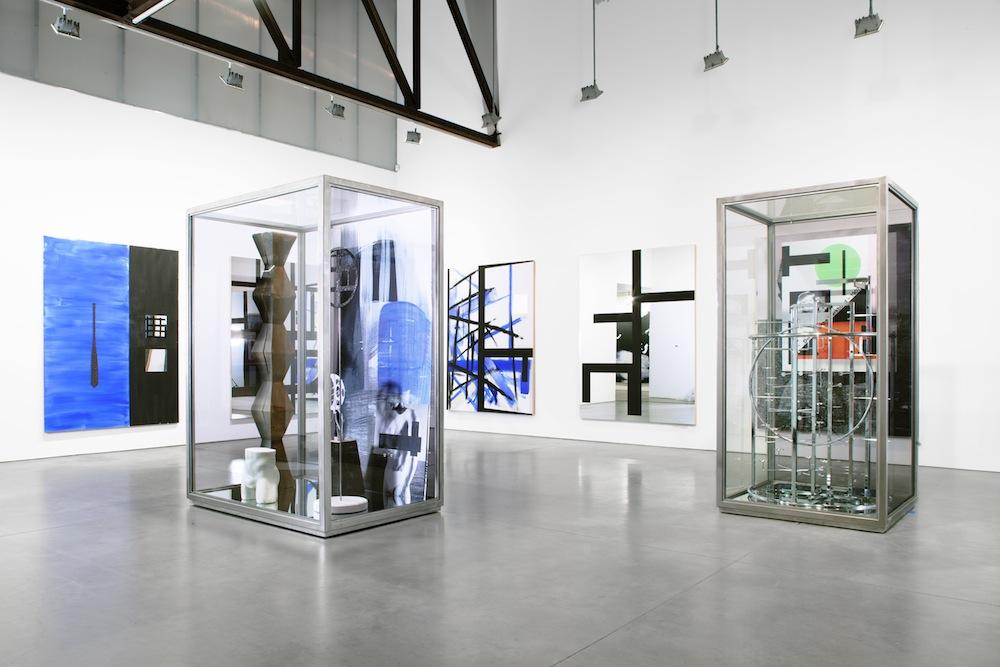
01.03.14
Sighted
Josephine Meckseper in Interview Magazine
Living in New York City, you'd think it would be easy to see world-class art nearly every weekend. But life tends to get in the way, whether it's needing a haircut or having to wait in a six-hour line just to see a 45-second exhibition. But one show we're going to do our darndest to see before it closes January 18 is the first New York solo exhibition by German-born, New York–based artist Josephine Meckseper at the Andrea Rosen Gallery. While we don't often love art that appropriates advertising imagery, Meckseper's deft combinations of that imagery with things like hand made sculpture casts and paintings speaks to us somehow. This particular show deals with Meckseper's own complicated history, having moved in the late '80s as a young adult from a sheltered, artistic European community to Valencia, California, where mall was king. We spotted this recent Q&A with the artist in Interview Magazine (which has kind of been killing it on the art front, lately, what with the epic Roberta Smith/Jerry Saltz conversation) and wanted to share a tiny excerpt below. Read on and then click through at the end for the interview in its entirety.
